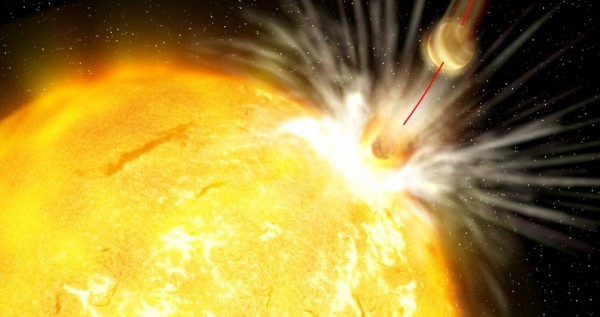By Ana Verayo, | December 19, 2016

HIP68468, a twin star to the sun about 300 light-years away, may have swallowed one or more of its planets. (Gabi Perez / Instituto de Astrofísica de Canarias)
Astronomers have detected a sun-like star with exoplanets similar to our solar system. However, unlike most star systems, this one possesses a "Death Star" that likes to eat and destroy the planets orbiting it.
In this new study, a team from the University of Chicago conducted observations of this particular star system known as the sun's solar twin or HIP68468, located some 300 light years away from Earth.
Like Us on Facebook
Their findings reveal that this star possesses four times more lithium than a regular star of the same life span of six billion years which means that it contains a significant amount of metals that are resistant to heat, and which are also abundant in rocky planets like Earth.
More specifically, the amount of lithium in the atmosphere of HIP68468 is estimated to be as much as the mass of six Earths, suggesting that this star has ingested some of its orbiting planets.
Scientists say this star may appear like a "Death Star" based on the massive moon-sized space station that destroys entire planets from the "Star Wars" film.
This new study suggests that these violent processes can be common in planetary systems like ours, according to the co-author of the study, Jacob Bean of the University of Chicago.
With these new findings, researchers aim to gain a better understanding of the evolutionary processes within planetary systems.
About five billion years from now, scientists predicted that our sun would further expand into a red giant, and Mercury will be engulfed into this massive fiery ball. Venus will also follow. However, the fate of Earth is still unknown. By studying our system's solar twins and exoplanets, scientists will be able to get a clearer picture of Earth's future evolution.
This new study was published in the journal Astronomy and Astrophysics.
-
Use of Coronavirus Pandemic Drones Raises Privacy Concerns: Drones Spread Fear, Local Officials Say

-
Coronavirus Hampers The Delivery Of Lockheed Martin F-35 Stealth Fighters For 2020

-
Instagram Speeds Up Plans to Add Account Memorialization Feature Due to COVID-19 Deaths

-
NASA: Perseverance Plans to Bring 'Mars Rock' to Earth in 2031

-
600 Dead And 3,000 In The Hospital as Iranians Believed Drinking High-Concentrations of Alcohol Can Cure The Coronavirus

-
600 Dead And 3,000 In The Hospital as Iranians Believed Drinking High-Concentrations of Alcohol Can Cure The Coronavirus

-
COVID-19: Doctors, Nurses Use Virtual Reality to Learn New Skills in Treating Coronavirus Patients







